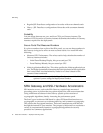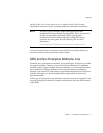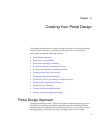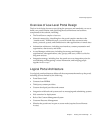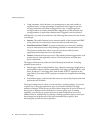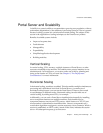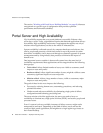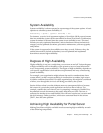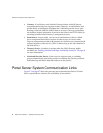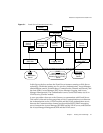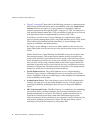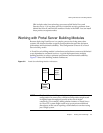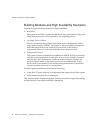Portal Server and Scalability
Chapter 5 Creating Your Portal Design 83
Portal Server and Scalability
Scalability is a system’s ability to accommodate a growing user population, without
performance degradation, by the addition of processing resources. The two general
means of scaling a system are vertical and horizontal scaling. The subject of this
section is the application of scaling techniques to the Portal Server product.
Benefits of scalable systems include:
•Improved response time
• Fault tolerance
• Manageability
• Expendability
• Simplified application development
• Building modules
Vertical Scaling
In vertical scaling, CPUs, memory, multiple instances of Portal Server, or other
resources are added to one machine. This enables more process instances to run
simultaneously. In Portal Server, you want to make use of this by planning and
sizing to the number of CPUs you need. See Chapter 4, “Pre-Deployment
Considerations” for more information.
Horizontal Scaling
In horizontal scaling, machines are added. This also enables multiple simultaneous
processing and a distributed work load. In Portal Server, you make use of
horizontal scaling because you can run the Portal Server, Directory Server and
Access Manager on different nodes. Horizontal scaling can also make use of
vertical scaling, by adding more CPUs, for example.
Additionally, you can scale a Portal Server installation horizontally by installing
server component instances on multiple machines. Each installed server
component instance executes an HTTP process, which listens on a TCP/IP port
whose number is determined at installation time. Gateway components use a
round-robin algorithm to assign new session requests to server instances. While a
session is established, an HTTP cookie, stored on the client, indicates the session
server. All subsequent requests go to that server.




